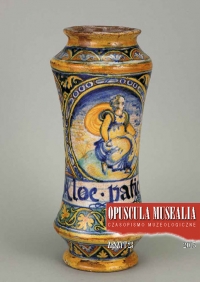„Wyjście żaków z Krakowa w roku 1549” – uwagi na marginesie dzieła Jana Matejki
A few remarks on Jan Matejko’s painting “Students Leaving Kraków in 1549”
Author(s): Janina WilkoszSubject(s): Visual Arts, 16th Century, 19th Century, Sociology of Art
Published by: Wydawnictwo Uniwersytetu Jagiellońskiego
Keywords: Jan Matejko; students; Kraków Academy; Kraków City Council; Order of the Holy Ghost of de Saxia; hospital of the Holy Ghost; Municipal Theatre in Kraków; Wiśnicz;
Summary/Abstract: The painting Students Leaving Kraków in 1549 is a late work of Jan Matejko, associated with some particular circumstances in his life. He began painting the picture in 1892 and completed it in February 1893. It depicts a rather dishonourable chapter in the history of the Kraków Academy. The story is based on events which are remembered as a dispute of academic youth in Kraków with the parish priest of All Saints’ Church, Canon Andrzej Czarnkowski. There conflict between him and the students when the esteemed priest was accused of entering into collusion with the underworld, and as a result one student lost his life. Further developments showed rather disgraceful roles of university authorities, King Sigismund August and city authorities in the dispute. When perpetrators of the murder escaped punishment after a biased trial, Kraków students decided to leave the university and the city in the act of protest. It was not by accident that the artist chose their exodus as the theme for his work. After a dramatic struggle with the City Council to save the Church and the Hospital of the Holy Ghost – which he lost – he also intended to leave Kraków. However, as he could not do it, he decided to transform his dramatic into art. He depicted the culminating moment of the sixteenth century feud – the fourth of June, when indignant students gathered on the Kleparski Square, just about to leave the city walls. Kraków buildings are in the background, among which the Gothic monastery of the Holy Ghost – the subject of the 19th-century dispute – takes the central place. Perhaps Matejko’s dispute with city councillors brought to his mid his past, equally painful loss. In 1863, Stary Wiśnicz, which was dear to his heart and which he frequently visited to meet his fiancée Teodora, then Miss Giebułtowska, was burnt by fi re. By pure accident, the day before the fire he was out, drawing Wiśnicz houses. When, as a result of his recent dramatic experience, he created his Students Leaving Kraków, his other, he also referred to his equally painful memories. The square from which students set off is surrounded by wooden architecture of burnt Wiśnicz.
Journal: Opuscula Musealia
- Issue Year: 2015
- Issue No: 23
- Page Range: 213-229
- Page Count: 17
- Language: Polish

